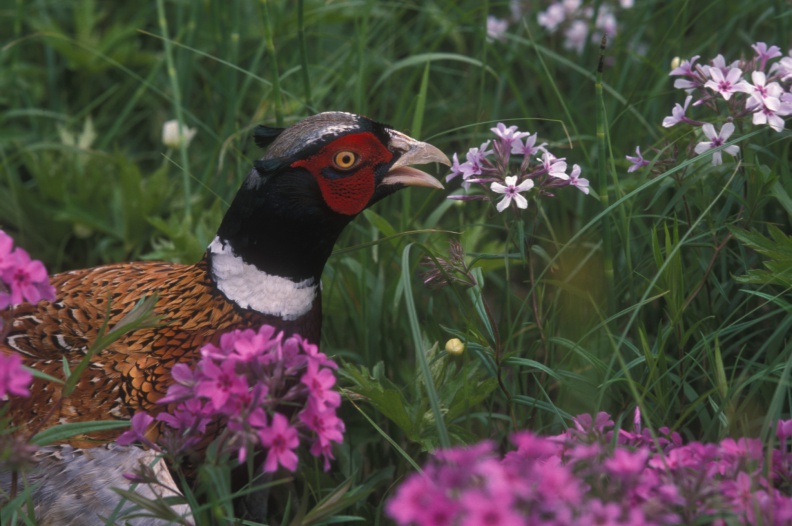Pheasants Forever leads the national charge putting milkweed in the ground to benefit butterflies and pheasants alike
By Tom Carpenter
What’s good for pheasants is good for other wildlife. Sometimes overlooked in the habitat equation, though, were pollinators – butterflies and bees most famously, but also beetles, moths, wasps, dragonflies and insects that carry pollen from flower to flower.
Pheasants Forever is a national leader in the effort to bring back pollinators. One of the most important beneficiaries is the monarch butterfly, which depends solely on milkweed as a host plant for eggs, food for hatched caterpillars, and housing for chrysalises that nurture developing butterflies until they burst forth, dry their wings and flutter off.
But milkweed is in trouble. That has put the monarch butterfly in jeopardy. Real jeopardy. Let’s look at what happened to all the milkweed and document the resulting troubles for monarch butterflies, and explore the leadership role Pheasants Forever is taking in bringing both back to the landscape to the tune of almost two-thirds of a billion milkweed seeds in the ground to date.
Vanishing Milkweed
Much of the American prairie has been plowed for over a hundred years now. Milkweed, monarchs and roosters survived relatively well for much of that time. What changed?
“The development of herbicide-resistant corn and soybean seeds in the mid-1990s really accelerated the downward trend,” says Drew Larsen, Habitat Education Specialist for Pheasants Forever. “Milkweed could no longer survive between the rows.” Volunteer milkweed provided a decent count of plants that were surprisingly productive for monarchs, according to Iowa State University studies.
Another Iowa State study showed that the U.S. had half the milkweed plants in 2010 compared to the mid-1990s, while at the same time the number of monarch butterfly eggs produced went down by 81 percent.
“Fence-to-fence plowing also hurt milkweed,” says Larsen. It hurt pheasants too. The practice eliminates the grassy margins, field edges, fencelines and road edges where milkweed previously thrived and pheasants eked out a living.
Creating Habitat
“When planning a habitat project, Pheasants Forever Farm Bill biologists work with landowners to design seed mixes that fit their land and its needs,” says Rick Young, Vice President of Field Operations for Pheasants Forever. “Putting milkweed in our mixes has been a priority and a concentrated effort.”
“We also work to educate landowners about milkweed’s benefits,” adds Young. “That’s an old stigma that’s hard to overcome. But we’re doing it.”
“There are over 100 species of milkweed in the U.S alone,” says Larsen. “From a monarch standpoint, common milkweed is the most important variety. Butterfly milkweed is also good, but there are many other milkweeds. For example, we'll use swamp milkweed near wetlands and moist places.”
The following numbers tell the story since Pheasants Forever and its sister organization, Quail Forever, started ramping up the inclusion of milkweed into habitat seed mixes back in 2012:
Projects Including Milkweed: 12,417
Total Acres Impacted: 155,974
Milkweed Seeds Planted: 643.3 Million
For some perspective, consider the total weight of those almost two-thirds of a billion individually-featherweighted seeds that can waft on a breeze: over 6,300 pounds.
Growing Pheasants Too
Good monarch habitat and good pheasant habitat have significant overlap. Monarchs need milkweed as a host and for nectar. But milkweed and other flowering plants (forbs) also attract the tiny insects that young pheasants eat almost exclusively the first two weeks of life.
Furthermore, the stem structure and densities of milkweed and other forbs (wildflowers) provide almost ideal corridors for pheasants of all ages to forage, walk, run and hide in.

“Like anything, it takes real partnerships to get habitat improvements – for both monarchs and roosters – on the ground, working with both government agencies and non-governmental organizations (NGOs),” says Young.
"A big goal of ours is to design seed mixes that are affordable,” says Aaron Kuehl, Director of Seed Operations for Pheasants Forever. “That affordability is key for making it easy for landowners, agencies and organizations to do what’s right for butterflies while helping the pheasants. Both species can win."
Conclusion
No one knows how many milkweed plants graced the Big Wide Open when the buffalo roamed, and Lewis and Clark first visited the Northern Plains.
But Pheasants Forever is leading the charge to bring milkweed back, as well as monarchs of two kinds – the one that floats on elegant orange-and-black wings on a summer breeze ... and the king of gamebirds, a colorful ring-necked rooster zooming across an autumn sky.
Tom Carpenter is editor at Pheasants Forever.